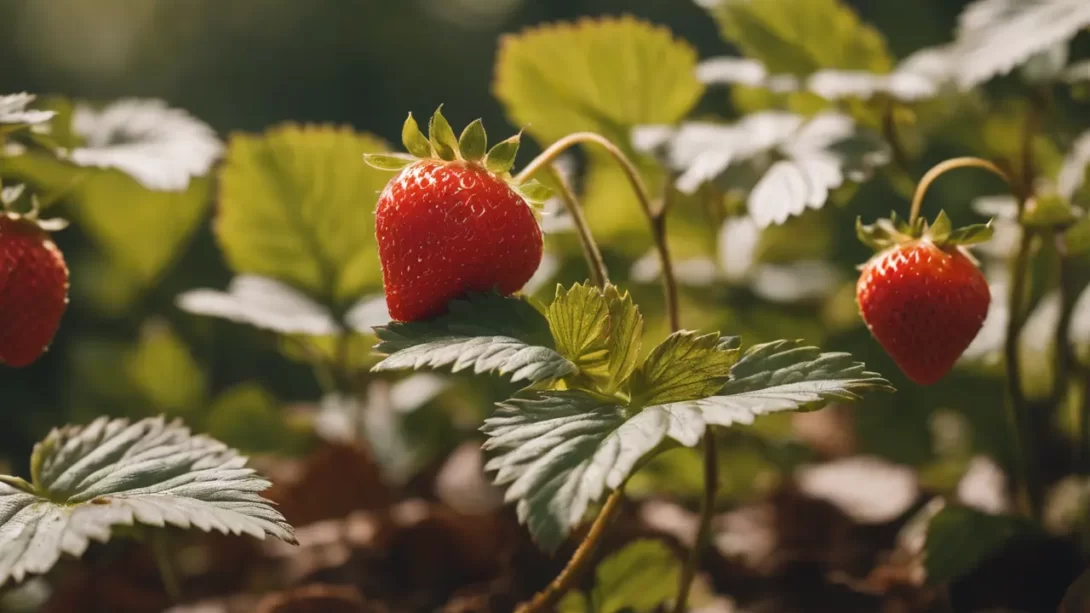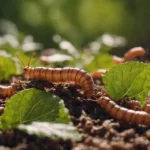Strawberries are a delightful addition to any garden, offering sweet rewards and vibrant greenery. However, gardeners often encounter a common issue: the leaves of their strawberry plants turning brown. This can be a cause for concern as it may signal underlying problems affecting the plant’s health and, subsequently, the quality and quantity of the fruit. Understanding why strawberry leaves turn brown is crucial for any gardener looking to maintain a healthy and productive strawberry patch.
- FOR USE ON: Use Berry-tone organic fertilizer for all berries including blueberries, strawberries, raspberries, and blackberries
- CONTAINS: Berry-tone is a rich blend of the finest natural & organic ingredients enhanced with our exclusive Bio-tone formula; 4-3-4 Fertilizer analysis with 5% Sulfur. Berry-tone is environmentally Safe – No sludges or toxic ingredients
- WHEN / HOW TO USE: Best to use Berry-tone fertilizer when planting or feeding established plants; most berries are best fed twice each year in early and late Spring. Berry-tone is ready to use and requires no mixing
- FOR ORGANIC GARDENING: Berry-tone is approved for organic gardening; It is a registered Organic Input Material meaning it meets all requirements for organic production
- MADE IN THE USA: Product of the Espoma Company. The leader in natural organics since 1929
Strawberry Plant Health
Strawberry plants are relatively hardy, but they do have specific needs that, if unmet, can lead to problems like browning leaves. These needs include adequate sunlight, water, nutrients, and protection from extreme elements. The health of the leaves is particularly important as they play a vital role in photosynthesis, the process by which plants produce food. Healthy leaves are usually a bright green, and any deviation from this, such as browning, could indicate a problem that needs addressing.
Common Causes of Browning Leaves
Nutritional Deficiencies
One of the primary reasons strawberry leaves may turn brown is due to nutritional deficiencies. Strawberries require a balanced mix of nutrients to thrive, including nitrogen, potassium, and magnesium. A deficiency in any of these can lead to the leaves turning brown and other growth problems. For instance, nitrogen deficiency often causes older leaves to turn a pale green or yellow before browning. Conducting a soil test can help determine if your soil is lacking in any essential nutrients, guiding you in providing the right fertilizer for your strawberry plants.
Water-Related Issues
Both over-watering and under-watering can lead to browning leaves in strawberry plants. Over-watering can cause the roots to become waterlogged, leading to root rot and browning leaves. On the other hand, under-watered strawberry plants can show signs of drought stress, with leaves turning brown and crispy. Ensuring that your strawberry plants are receiving the right amount of water is essential. This includes not just the frequency of watering but also considering factors like soil type and weather conditions. Proper drainage is also key to preventing water-logged roots, so consider planting in well-draining soil or raised beds.
Environmental Stress
Strawberry plants can be sensitive to their environment, and extreme conditions can lead to the browning of leaves. Excessive heat and direct sunlight, especially during the peak summer months, can cause the leaves to scorch and turn brown. Conversely, very cold temperatures can damage the plant tissues, leading to browning and dying leaves. Protecting strawberry plants from harsh weather is important. This can include using shade cloths during extreme heat or providing cold frames or mulch during frost-prone periods. Additionally, wind can cause physical damage to the leaves, so placing a barrier or planting in a sheltered location can help.
Disease and Fungal Infections
Diseases and fungal infections are common culprits behind brown leaves in strawberry plants. Leaf blight, leaf scorch, and powdery mildew are among the most common diseases affecting strawberries. Leaf blight causes brown spots on leaves, leaf scorch results in a reddening followed by browning, and powdery mildew covers leaves with a white, powdery fungus. These diseases can be managed by practicing good garden hygiene, such as removing infected leaves, avoiding overhead watering, and ensuring adequate spacing for air circulation. In some cases, fungicidal treatments may be necessary.
Pest Infestations
Pests such as spider mites, aphids, and slugs can also cause the leaves of strawberry plants to turn brown. These pests feed on the sap or the leaf tissue, leading to discoloration and damage. Spider mites, for instance, create fine webs on the underside of leaves and cause yellow speckling, which can turn to browning. Aphids suck the sap from leaves, causing them to curl and brown. Regularly inspecting your plants for signs of pests and maintaining a clean garden to reduce habitat for these pests are important preventive measures. Natural predators, organic insecticidal soaps, or, in severe cases, chemical pesticides can be used to control these pests.
Preventive Measures and Remedies
Maintaining healthy strawberry plants involves a proactive approach to garden care. Regular monitoring and maintenance can prevent many of the issues that lead to browning leaves. Ensure your strawberries are planted in well-draining soil and receive the right balance of sunlight and shade. Regular soil testing can help in maintaining the correct nutrient levels, and organic mulches can be used to conserve moisture and regulate soil temperature.
If nutritional deficiencies are detected, addressing them with appropriate fertilizers is key. For water-related issues, establish a consistent watering schedule that takes into account the weather and soil conditions. Drip irrigation systems can be particularly effective in providing consistent moisture without over-saturating the soil.
In terms of disease prevention, practicing crop rotation and removing any plant debris can reduce the risk of fungal infections. For gardens frequently affected by diseases, consider planting disease-resistant strawberry varieties. When using fungicides or pesticides, always follow the manufacturer’s instructions and opt for organic options when possible to minimize environmental impact.
Conclusion
Brown leaves on strawberry plants can be a sign of various issues, ranging from environmental stress to diseases and pest infestations. Identifying the underlying cause is essential for effective treatment and prevention. Regular care, including proper watering, nutrition management, disease prevention, and pest control, is key to maintaining a healthy strawberry garden. By understanding and addressing these potential issues, you can ensure that your strawberry plants continue to thrive, providing you with delicious fruit and a beautiful garden display. Remember, the health of your plants is an ongoing commitment, and a little attention and care can go a long way in ensuring a bountiful harvest.





